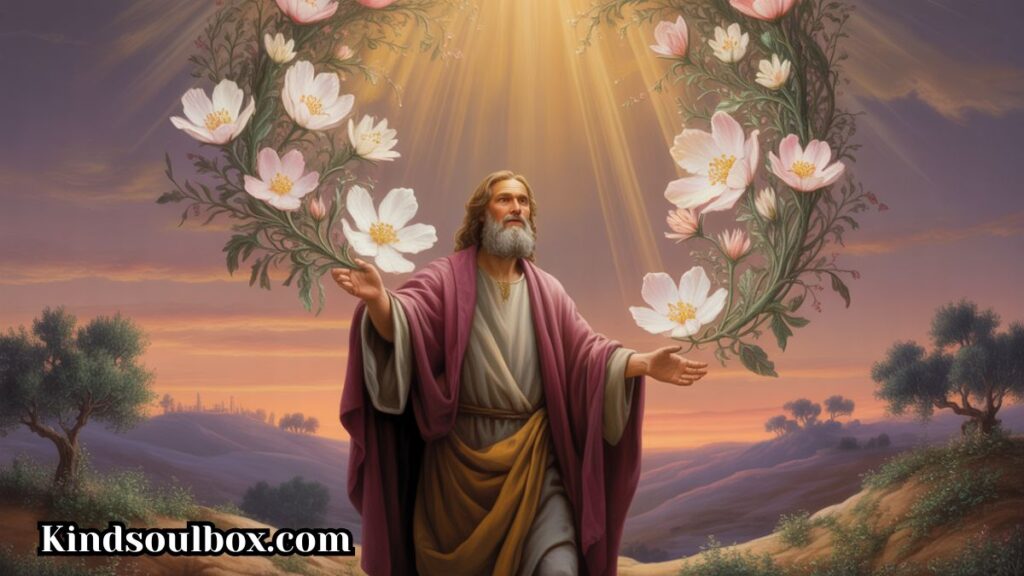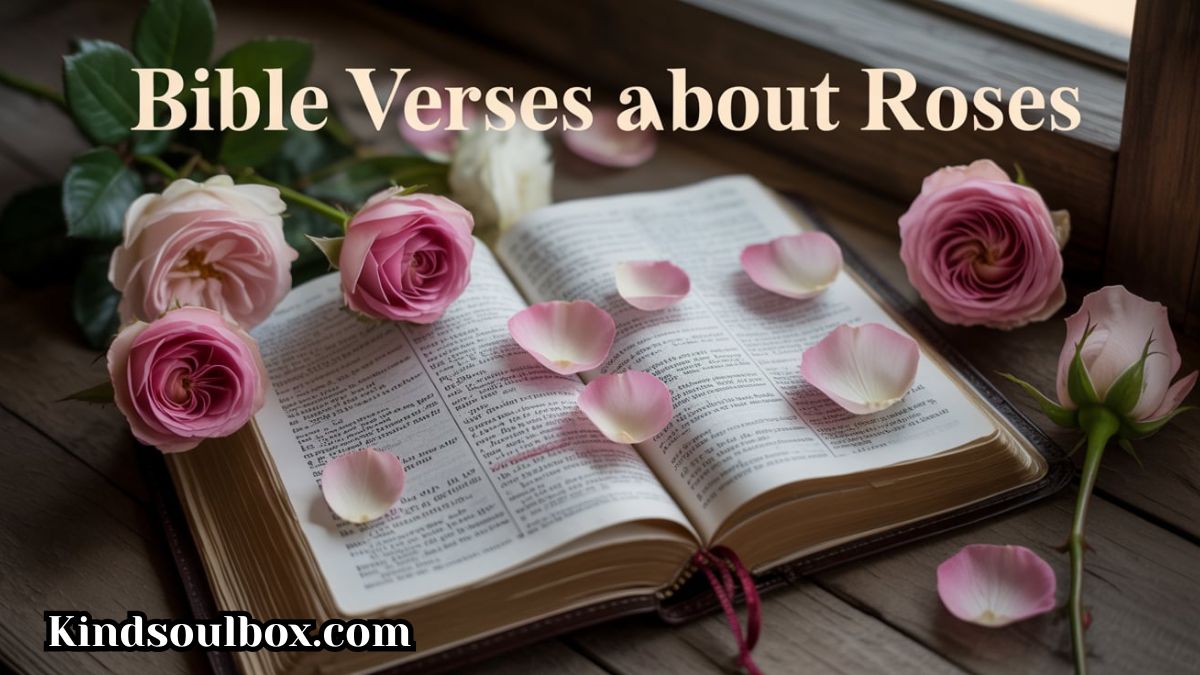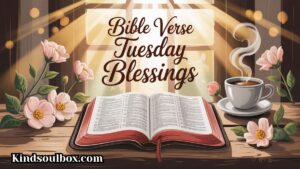Bible verses about roses explore scriptural references to flowers that Christians have long associated with divine beauty, sacrificial love, and spiritual transformation. These passages—though often involving translation mysteries—communicate profound truths about God’s character and creation’s glory.
Imagine discovering that the “rose” you’ve quoted for years might actually be a humble crocus. This revelation doesn’t diminish Scripture’s power—it deepens it. Ancient wildflowers blooming across Israel’s landscapes carried messages more powerful than any cultivated garden could whisper.
Bible verses about roses bridge botanical reality and spiritual symbolism. From Song of Solomon’s meadow flowers to Isaiah’s desert blossoms, Scripture uses floral imagery to teach resilience, hope, and redemption. Understanding what these passages actually said—and how rose symbolism developed through church history—enriches your faith journey with honest beauty rather than wishful thinking.
The Translation Truth: Do Roses Actually Appear in Scripture?
Here’s something most believers don’t know: the rose as we imagine it rarely appears in original biblical texts. Translation creates beautiful confusion.
Hebrew Words Mistranslated as “Rose”
The Song of Solomon 2:1 declares: “I am the rose of Sharon, and the lily of the valleys.” For centuries, readers pictured crimson petals. They shouldn’t have.
The Hebrew word chavatzelet likely referred to:
- Crocus bulbs blooming in spring meadows
- Meadow saffron with purple flowers
- Coastal narcissus found near Sharon’s plains
- Possibly a lily species entirely
King James translators chose “rose” in 1611. They worked without modern botanical knowledge. Their decision shaped how millions read scripture for four hundred years.
Why does this matter? Because the beloved in Solomon’s poetry wasn’t claiming unfamiliar beauty. She described herself as a common wildflower—humble, accessible, growing freely across Israel’s landscape. That changes everything about the passage’s meaning.
The “Rose of Sharon” Controversy
Botanical evidence tells a fascinating story. Ancient Israel’s Sharon valley stretched along the Mediterranean coast. Roses didn’t naturally thrive there. The climate favored:
| Plant Type | Hebrew Name | Growing Season | Symbolic Meaning |
|---|---|---|---|
| Crocus | Chavatzelet | Winter/Spring | Renewal after dormancy |
| Narcissus | Chavatzelet | Spring | Simple beauty |
| Tulip Species | Chavatzelet | Spring | Temporary splendor |
| Asphodel | Chatsav | Summer | Desert resilience |
Scholars now agree: the Rose of Sharon was probably a bulb flower, not a rose. This humble origin makes the scriptural metaphor more powerful, not less.
Isaiah’s Wilderness Blooming
Isaiah 35:1 promises: “The wilderness and the solitary place shall be glad for them; and the desert shall rejoice, and blossom as the rose.” Here we find habatstseleth—the same disputed word.
Modern translations render it differently:
- ESV: “crocus”
- NIV: “crocus”
- NASB: “crocus”
- KJV: “rose”
The prophet described God’s promise of restoration through desert transformation. Whether crocus or rose, the message remains: barren places explode with color when divine intervention arrives.
Why Accuracy Matters for Your Faith
Precise translation protects us from eisegesis—forcing our ideas into scripture rather than extracting God’s intended meaning. When we claim “the Bible says roses mean X,” we build theology on shaky ground.
Authentic faith requires honest engagement with holy text. We can appreciate rose symbolism without pretending it originates directly from biblical passages. Truth strengthens belief; wishful thinking undermines it.
Flowers That Scripture Actually Mentions

Jesus Christ and biblical writers referenced specific plants. These appearances carry genuine spiritual weight.
Lilies of the Field
Matthew 6:28-29 records Jesus teaching: “Consider the lilies of the field, how they grow; they toil not, neither do they spin: And yet I say unto you, That even Solomon in all his glory was not arrayed like one of these.”
Scholars debate which flower Jesus meant:
- Red anemones carpeting Galilean hillsides
- White Madonna lilies cultivated in gardens
- Wild irises growing along stream banks
- Crown daisies blooming in spring
The specific species matters less than Christ’s lesson. These flowers demonstrate divine provision. They don’t manufacture their beauty through effort. God adorns them freely. If God clothes temporary grass-flowers magnificently, won’t He care for His eternal children?
This teaching directly addresses our spiritual lives. Anxiety about provision reveals trust issues. Observing creation’s beauty should calibrate our faith path toward confidence in God’s unwavering love.
Hyssop: The Purification Plant
Exodus 12:22 describes Israelites applying lamb’s blood with hyssop branches during Passover. Psalm 51:7 pleads: “Purge me with hyssop, and I shall be clean.”
This humble herb became essential in atonement rituals. At the crucifixion, soldiers offered Jesus wine vinegar on a hyssop stalk (John 19:29)—connecting His sacrificial love to ancient purification ceremonies.
The blood of Christ fulfilled what hyssop symbolized: complete cleansing from sin. Grace and redemption flow from His holy sacrifice, not ritual plants.
Almond Blossoms
Numbers 17:8 records a miracle: Aaron’s dead staff sprouted almond blossoms overnight, proving God’s chosen priesthood. The Temple menorah was designed with almond-flower decorations (Exodus 25:31-36).
Almond trees bloom before any other fruit tree in Israel—often in January. They symbolize:
- Resurrection (life from apparent death)
- Watchfulness (Hebrew shaqed means “awakening”)
- New beginnings after winter dormancy
Fig Leaves and Grape Vines
From Eden’s fig-leaf coverings (Genesis 3:7) to Jesus’s vineyard parables, these plants saturate scripture. John 15:1-8 uses grape cultivation as a metaphor for spiritual growth: “I am the true vine, and my Father is the husbandman.”
Agricultural imagery made sense to ancient audiences. Modern readers must work harder to grasp these teachings, but the effort rewards with deeper understanding of God’s relationship with His people.
Where Christian Rose Symbolism Actually Originated
If roses barely appear in the Bible, how did they become central to Christian symbolism? The answer lies in church history, not scripture quotes.
Medieval Christianity’s Floral Language
By the 12th century, the Virgin Mary was called Rosa Mystica—the mystical rose. Cathedral architecture incorporated massive rose windows representing:
- The Holy Spirit’s illumination
- Mary’s purity
- The radiance of divine love
- Heaven’s beauty breaking into earthly spaces
The Rosary developed as a prayer practice. Its name derives from Latin rosarium (rose garden). Each prayer represented a spiritual rose offered to the blessed mother. This devotional tool helped illiterate believers memorize scripture and prayers.
Christian imagery evolved separately from biblical poetry. Artists and theologians developed symbolic roses that carried theological meaning, even without direct scriptural foundation.
The Five-Petaled Rose
Medieval thinkers observed most wild roses have five petals. They connected this to Jesus Christ’s five wounds:
- Left hand nail
- Right hand nail
- Left foot nail
- Right foot nail
- Spear piercing His side
Red roses represented the blood of Christ—His sacrificial love poured out for humanity’s salvation. White roses symbolized purity and innocence, often associated with the Virgin Mary or the soul cleansed through atonement.
This floral symbolism appears in:
- Stained glass artwork
- Illuminated manuscripts
- Liturgical vestments
- Hymn lyrics
- Theological writings
Literary Christianity
Dante’s Divine Comedy concludes with a vision of heaven as an enormous white rose. Souls of the redeemed form petals around God’s blazing presence. This poetic rose imagery influenced centuries of Christian art and thought.
St. Thérèse of Lisieux (1873-1897) called herself “the Little Flower,” promising to spend her heaven doing good on earth by showering roses (miracles and blessings) upon the world. Her devotion popularized rose-petal symbolism in Catholic practice.
Legitimate Biblical Parallels
While roses themselves aren’t extensively biblical, several authentic connections exist:
Beauty and Transience: James 1:10-11 warns that “the rich man shall fade away in his ways” like grass and flowers. Roses exemplify life’s fragility—gorgeous today, wilted tomorrow.
Thorns and Beauty: Genesis 3:18 records thorns as part of the curse following Eden’s fall. Roses perfectly embody this paradox: stunning blossoms protected by painful spines. Jesus’s crown of thorns (Matthew 27:29) turned symbols of the curse into emblems of redemptive blood.
Creation’s Glory: Romans 1:20 teaches that God’s “invisible qualities—his eternal power and divine nature—have been clearly seen, being understood from what has been made.” Roses declare their Creator’s artistry without speaking words.
Song of Solomon: Love Poetry Decoded
The Song of Solomon contains more flower references than any other biblical book. Understanding its context unlocks deeper meaning.
“I Am the Rose of Sharon”
Song of Solomon 2:1-2 reads: “I am the rose of Sharon, and the lily of the valleys. As the lily among thorns, so is my love among the daughters.”
Who speaks these words? Debate continues:
- The Shulammite woman describing her humble origins
- Solomon praising his beloved
- A mutual exchange of compliments
Ancient Near Eastern love poetry used garden imagery extensively. Egyptian love songs from the same era compare lovers to flowers, fruits, and fragrant spices. This literary convention helped express romantic passion within cultural boundaries.
The passage emphasizes:
- Beauty and renewal despite humble circumstances
- Distinctiveness (“lily among thorns”)
- Natural, unforced loveliness
- Accessibility (wild flowers versus cultivated rarities)
Botanical References in Context
The Song of Solomon catalogs an impressive botanical garden:
- Roses/crocuses (2:1)
- Lilies (2:1-2, 16; 4:5; 5:13; 6:2-3)
- Apple trees (2:3, 5; 7:8; 8:5)
- Vines and grapes (1:6, 14; 2:13, 15; 6:11; 7:8, 12; 8:11-12)
- Pomegranates (4:3, 13; 6:7, 11; 7:12; 8:2)
- Myrrh (1:13; 3:6; 4:6, 14; 5:1, 5, 13)
- Frankincense (3:6; 4:6, 14)
This abundance celebrates physical creation as God-given and good. Biblical passages affirm material beauty, sensual pleasure within marriage, and embodied existence. Gnostic heresies that despised physical reality find no support here.
Typological Interpretation
Church fathers read the Song of Solomon allegorically:
- The male lover represents Jesus Christ
- The female beloved represents the Church or individual soul
- Their union pictures spiritual love between God and His people
This interpretation method (typology) finds deeper meanings in literal texts. Origen, Bernard of Clairvaux, and countless other theologians wrote extensive commentaries exploring these layers.
Modern readers need balance. The poem celebrates human love authentically. Simultaneously, human marriage reflects Christ’s relationship with His bride, the Church (Ephesians 5:25-32). Both readings honor scripture’s richness.
Isaiah’s Prophetic Blossoms

Isaiah used flower metaphors to communicate hope and joy amid judgment prophecies.
The Desert Blooming
Isaiah 35:1-2 proclaims: “The wilderness and the solitary place shall be glad for them; and the desert shall rejoice, and blossom as the rose. It shall blossom abundantly, and rejoice even with joy and singing: the glory of Lebanon shall be given unto it, the excellency of Carmel and Sharon, a rose shall see the glory of the LORD, and the excellency of our God.”
This messianic prophecy describes:
- Complete environmental transformation
- Joy replacing desolation
- Lebanon’s famous cedars representing majesty
- Carmel’s lush fertility blessing barren ground
- Sharon’s coastal beauty spreading inland -Visible manifestation of God’s glory
The desert blooming became a powerful image of spiritual renewal. What appears dead and hopeless will burst into unexpected life when God acts. This promise sustained Jewish exiles in Babylon and encourages believers facing personal deserts today.
Companion Prophecies
Isaiah 51:3 echoes this theme: “For the LORD shall comfort Zion: he will comfort all her waste places; and he will make her wilderness like Eden, and her desert like the garden of the LORD; joy and gladness shall be found therein, thanksgiving, and the voice of melody.”
Eden’s restoration represents ultimate redemption. The curse of Genesis 3 will reverse. Thorns and thistles give way to blossoms and fruit. Humanity’s broken relationship with creation heals through divine mercy.
Isaiah 55:13 adds: “Instead of the thorn shall come up the fir tree, and instead of the brier shall come up the myrtle tree: and it shall be to the LORD for a name, for an everlasting sign that shall not be cut off.”
Modern Application
These prophecies speak to your current circumstances. When life feels barren—relationships withered, purposes unclear, faith practices dry—God promises transformation. The same power that makes deserts bloom can revive your spiritual journey.
Adversity isn’t the final word. Resilience grows from trusting God’s unwavering love during seasons of waiting. The flower doesn’t force itself to bloom. It trusts the process, absorbing nutrients underground before erupting into visible beauty.
Jesus on Flowers: The Sermon on the Mount
Jesus’s teachings use nature observations to communicate spiritual truths.
Matthew 6:28-30 Deep Dive
The full passage reads: “And why take ye thought for raiment? Consider the lilies of the field, how they grow; they toil not, neither do they spin: And yet I say unto you, That even Solomon in all his glory was not arrayed like one of these. Wherefore, if God so clothe the grass of the field, which to day is, and to morrow is cast into the oven, shall he not much more clothe you, O ye of little faith?”
Jesus addresses anxiety systematically:
First, He redirects attention from worry to observation—”consider the lilies.” Contemplation of beauty inherent in God’s creation disrupts mental loops of fear.
Second, He notes their effortless existence. Flowers don’t manufacture their splendor through striving. They simply receive what God provides through soil, sun, and rain.
Third, He invokes Solomon—Israel’s wealthiest, wisest king. First Kings 10 describes his legendary opulence: golden shields, ivory thrones, foreign imports. Yet divine provision outshines human achievement.
Fourth, He emphasizes flowers’ temporary nature. Grass served as fuel for ovens. These gorgeous blooms last days, not years. If God lavishes attention on temporary grass-flowers, how much more will He care for His eternal image-bearers?
Finally, He diagnoses the problem: “little faith.” Worry reveals what we actually believe about God’s character. Does He care? Is He capable? Will He provide?
Solomon’s Glory Comparison
1 Kings 10 provides context for Jesus’s reference. Solomon possessed:
- 666 talents of gold annually (about 25 tons)
- Drinking vessels of pure gold
- A throne overlaid with gold, inlaid with ivory
- Ships bringing silver, ivory, apes, and peacocks
- Visitors from every nation seeking his wisdom
Despite all this, Solomon couldn’t match a wildflower’s God-given beauty. Human accomplishment, wealth, and power pale before divine artistry. This comparison reorients value systems.
Practical Faith Lessons
Jesus’s flower sermon teaches:
- Observation is spiritual practice: Nature study becomes meditation on scripture’s living illustrations
- Worry insults God: Anxiety implies He’s unaware, uncaring, or incapable
- Present provision proves future care: Past faithfulness grounds confidence for tomorrow
- Value isn’t earned: Flowers don’t deserve their beauty; God gives freely based on His character, not their merit
Your spiritual life flourishes when you internalize these principles. Stop striving to create worth. Start receiving God’s generous provision.
Biblical Principles Applied to Rose Symbolism
Even without explicit scripture mandating rose interpretation, biblical principles guide meaningful engagement with floral symbols.
Beauty Points Beyond Itself
Romans 1:20 declares: “For the invisible things of him from the creation of the world are clearly seen, being understood by the things that are made, even his eternal power and Godhead.”
Every rose proclaims its Creator. When you notice:
- Velvet petal texture
- Graduated color saturation
- Geometric spiral of petals
- Perfect symmetry in asymmetric arrangement
- Intoxicating fragrance
You encounter evidence of divine intelligence. The rose didn’t design itself through random processes. Its complexity points toward an Artist of infinite creativity.
Psalm 19:1 adds: “The heavens declare the glory of God; and the firmament sheweth his handywork.” This extends beyond stars to every created thing, including humble flowers.
Thorns and the Fall
Genesis 3:17-18 records God’s curse after human rebellion: “Cursed is the ground for thy sake; in sorrow shalt thou eat of it all the days of thy life; Thorns also and thistles shall it bring forth to thee.”
Thorns represent:
- Pain in a fallen world
- Protection mechanisms developed after Eden
- Beauty’s costly maintenance
- Adversity and sin’s reality
The rose embodies this perfectly. Stunning blossoms grow alongside painful spines. You can’t have one without the other in current creation.
Jesus’s crown of thorns (Matthew 27:29) transformed curse symbols into redemption emblems. He bore thorns’ pain so we could experience eternal beauty. The passion of Christ reversed the curse without eliminating its present reality.
Transience and Eternity
James 1:10-11 warns: “But the rich, in that he is made low: because as the flower of the grass he shall pass away. For the sun is no sooner risen with a burning heat, but it withereth the grass, and the flower thereof falleth, and the grace of the fashion of it perisheth.”
1 Peter 1:24-25 quotes Isaiah 40:6-8: “All flesh is as grass, and all the glory of man as the flower of grass. The grass withereth, and the flower thereof falleth away: But the word of the Lord endureth for ever.”
Roses teach life’s fragility. Their brief bloom reminds us to:
- Cherish the moment—beauty fades
- Invest in eternal things, not temporary displays
- Trust God’s permanent Word over shifting circumstances
- Value relationship over achievement
The fleeting nature of life should inspire urgency in faith practices, not despair. We have limited time to love well, serve generously, and share scripture’s hope.
Theological Themes Connected to Floral Imagery
Biblical symbolism uses plants to communicate profound spiritual truths.
New Creation Language
Revelation 21-22 describes heaven as a garden city. The Tree of Life reappears (Revelation 22:2), bearing twelve kinds of fruit monthly. This eternal life imagery reverses Genesis 3, when humans lost access to that tree.
2 Corinthians 5:17 proclaims: “Therefore if any man be in Christ, he is a new creature: old things are passed away; behold, all things are become new.” Spiritual rebirth mirrors natural cycles of death and regrowth.
Flowers’ annual resurrection from apparent death symbolizes:
- Resurrection power through Christ
- Renewal available daily (Lamentations 3:22-23)
- Hope that dead situations can bloom again
- Grace transforming winter into spring
Bride Imagery
Ephesians 5:25-27 instructs: “Husbands, love your wives, even as Christ also loved the church, and gave himself for it; That he might sanctify and cleanse it with the washing of water by the word, That he might present it to himself a glorious church, not having spot, or wrinkle, or any such thing; but that it should be holy and without blemish.”
Revelation 19:7-8 celebrates: “Let us be glad and rejoice, and give honour to him: for the marriage of the Lamb is come, and his wife hath made herself ready. And to her was granted that she should be arrayed in fine linen, clean and white.”
Brides historically carry roses in literature and practice. This floral representation connects to scripture’s bride metaphor naturally. The Church adorns herself for her Bridegroom through:
- Purity maintained by the Holy Spirit
- Beauty and renewal through sanctification
- Grace bestowed, not earned
- Love response to Christ’s sacrificial love
Growth and Fruitfulness
John 15:1-8 records Jesus explaining: “I am the true vine, and my Father is the husbandman. Every branch in me that beareth not fruit he taketh away: and every branch that beareth fruit, he purgeth it, that it may bring forth more fruit.”
Psalm 1:3 blesses the righteous person: “And he shall be like a tree planted by the rivers of water, that bringeth forth his fruit in his season; his leaf also shall not wither; and whatsoever he doeth shall prosper.”
Spiritual growth follows agricultural patterns:
- Seeds of scripture planted in receptive hearts
- Watering through spiritual practices
- Sunlight of God’s presence
- Pruning that removes dead growth
- Fruit demonstrating healthy roots
Galatians 5:22-23 lists the Spirit’s fruit: “love, joy, peace, longsuffering, gentleness, goodness, faith, meekness, temperance.” These character qualities bloom when believers abide in Christ.
Practical Ways to Engage Scripture Through Nature
Creation-based faith practices enrich your spiritual journey.
Creation-Based Bible Study
Try these approaches:
Plant a rose garden while memorizing relevant scripture quotes. Physical labor with dirt and roots grounds abstract theology in sensory experience.
Photography walks focused on flowers train observation skills. Notice details you’d normally miss. Ask: “What does this reveal about God’s character?”
Nature journaling combines sketching plants with recording biblical passages and personal reflections. Visual and verbal processing deepens retention.
Seasonal tracking of local flowers parallels spiritual seasons. When do buds form? How long until bloom? What conditions trigger flowering? Apply these observations to your faith path.
Symbolic Gift-Giving
Roses communicate messages beyond words:
Wedding bouquets with scripture cards attached bless couples with biblical truth about covenant love. Appropriate verses include:
- Song of Solomon 2:16: “My beloved is mine, and I am his”
- 1 Corinthians 13:4-7: Love’s characteristics
- Ephesians 5:25-33: Marriage as Christ and Church picture
Funeral arrangements with resurrection themes comfort grieving families. Consider:
- John 11:25-26: “I am the resurrection and the life”
- 1 Thessalonians 4:13-14: Believers’ hope
- Psalm 23:4: “Valley of the shadow of death”
Encouragement bouquets brighten difficult seasons with hope-filled scriptures:
- Isaiah 35:1: Desert blooming
- Jeremiah 29:11: God’s plans for welfare
- Romans 8:28: All things work together for good
Artistic Expression
Creative engagement with biblical poetry and nature strengthens understanding:
Calligraphy projects beautify favorite verses about flowers. Frame them as daily reminders of spiritual truths.
Pressed flower bookmarks preserve actual blooms alongside printed scripture. Practical art meets devotional practice.
Garden design incorporating biblical plants creates outdoor meditation spaces. Include roses, lilies, grape vines, fig trees, and herbs mentioned in holy text.
Poetry writing inspired by nature and scripture exercises both creative and theological muscles. Follow models like George Herbert or Gerard Manley Hopkins, whose works integrate faith and observation. Bible Verses About Roses.
Common Misconceptions Addressed
Honest faith requires distinguishing biblical teaching from tradition.
“The Bible Says Roses Symbolize…”
Many claims about rose symbolism lack scriptural foundation. When someone insists “the Bible teaches roses mean divine love,” check actual references. You’ll often find:
- Medieval tradition, not biblical passages
- Translation confusion about flower species
- Cultural roses symbolism imported from secular literature
- Eisegesis (reading meaning into text) rather than exegesis (extracting intended meaning)
This doesn’t make symbolic roses invalid for personal devotion. But intellectual honesty prevents building theology on assumptions. Bible Verses About Roses.
Proof-Texting Dangers
Pulling verses out of context distorts meaning. Claiming Song of Solomon 2:1 proves Jesus is “the Rose of Sharon” ignores:
- The speaker is female (the Shulammite)
- Context is human romantic poetry
- Hebrew word probably doesn’t mean “rose”
- Messianic interpretation, while valid in typology, wasn’t the literal meaning
Better approach: “Though this verse literally describes a young woman, Christians have traditionally seen Christ in all Scripture. Typologically, we can appreciate how Jesus embodies the humble beauty this passage celebrates.”
Balancing Appreciation and Accuracy
You can enjoy rose symbolism while acknowledging its extra-biblical origins. Christian imagery developed over centuries includes:
- Sacred symbols not explicitly commanded in Scripture
- Devotional practices enriching spiritual lives
- Artistic roses in church decoration
- Liturgical elements aiding worship
These enhance faith practices without replacing biblical authority. The Rosary helps Catholics pray; it doesn’t supersede Scripture’s primacy. Rose windows beautify cathedrals; they don’t define doctrine. Bible Verses About Roses.
Mature belief systems distinguish:
- Core biblical teachings (non-negotiable)
- Historic Christian traditions (valuable but not inspired)
- Cultural expressions of faith (contextual and flexible)
- Personal preferences (meaningful but not universal)
Conclusion
Bible verses about roses reveal something extraordinary: truth matters more than tradition. The flowers Scripture actually mentions—crocuses, lilies, desert blooms—teach profound lessons about God’s provision and faithfulness. Bible Verses About Roses. These authentic references carry power that manufactured symbolism cannot match. Bible Verses About Roses. Your spiritual growth thrives on honest engagement with holy text, not pretty assumptions.
Bible verses about roses ultimately point beyond petals to the Creator Himself. Whether you’re studying Song of Solomon’s wildflowers or Isaiah’s prophetic blossoms, every scriptural flower directs attention toward divine love and redemption. Bible Verses About Roses. Let these passages transform how you see both Scripture and creation. Bible Verses About Roses. Every bloom becomes a sermon. Every thorn whispers grace.
FAQS
Are there any Bible verses that directly mention red roses?
No authentic biblical passage specifically mentions red roses. The Hebrew and Greek texts refer to other wildflowers like crocuses or lilies that translators sometimes called “roses.”
What does a white rose symbolize in Christianity?
White roses traditionally represent purity, innocence, and the Virgin Mary in Christian tradition, though this symbolism developed through church history rather than direct Scripture.
Is the Rose of Sharon mentioned in the Bible the same as Jesus?
Song of Solomon 2:1’s “Rose of Sharon” literally describes a young woman, but Christians apply it typologically to Christ as a symbol of humble beauty and accessible grace.
Do roses appear in the book of Revelation?
No, Revelation doesn’t mention roses specifically. It describes the Tree of Life, precious stones, and white garments, but not roses in its heavenly imagery.
What flower did Jesus talk about most in the Bible?
Jesus referenced “lilies of the field” in Matthew 6:28-29, teaching about God’s provision and encouraging believers to trust rather than worry about material needs.









